Assessment of Economic Growth and Sustainable Development in Indonesia
VerifiedAdded on 2022/08/24
|7
|707
|12
Presentation
AI Summary
This presentation analyzes the article "Economic Growth and Sustainable Development in Indonesia: An Assessment" by Kurniawan and Managi. The presentation discusses the article's findings, which highlight Indonesia's steady GDP growth from 1990 to 2014 but also raise concerns about the sustainability of economic development due to the exploitation of resources. The presentation covers the conclusions and policy implications, including the need for appropriate evaluation of biodiversity, allocation of net-takings to productive assets, and implementation of a royalty policy. It also critically examines the article's weaknesses, such as the lack of identified optimum consumption levels of natural resources, and discusses areas for improvement, like considering the UNEP report and the specific context of archipelagic countries. The overall readability and understanding of the article are evaluated, emphasizing the impact of natural resource depletion on non-sustainable economic growth and the importance of technological catch-up strategies. Finally, the presentation assesses the relationship between deforestation and poverty, and rising energy prices to support the energy saving program.
1 out of 7
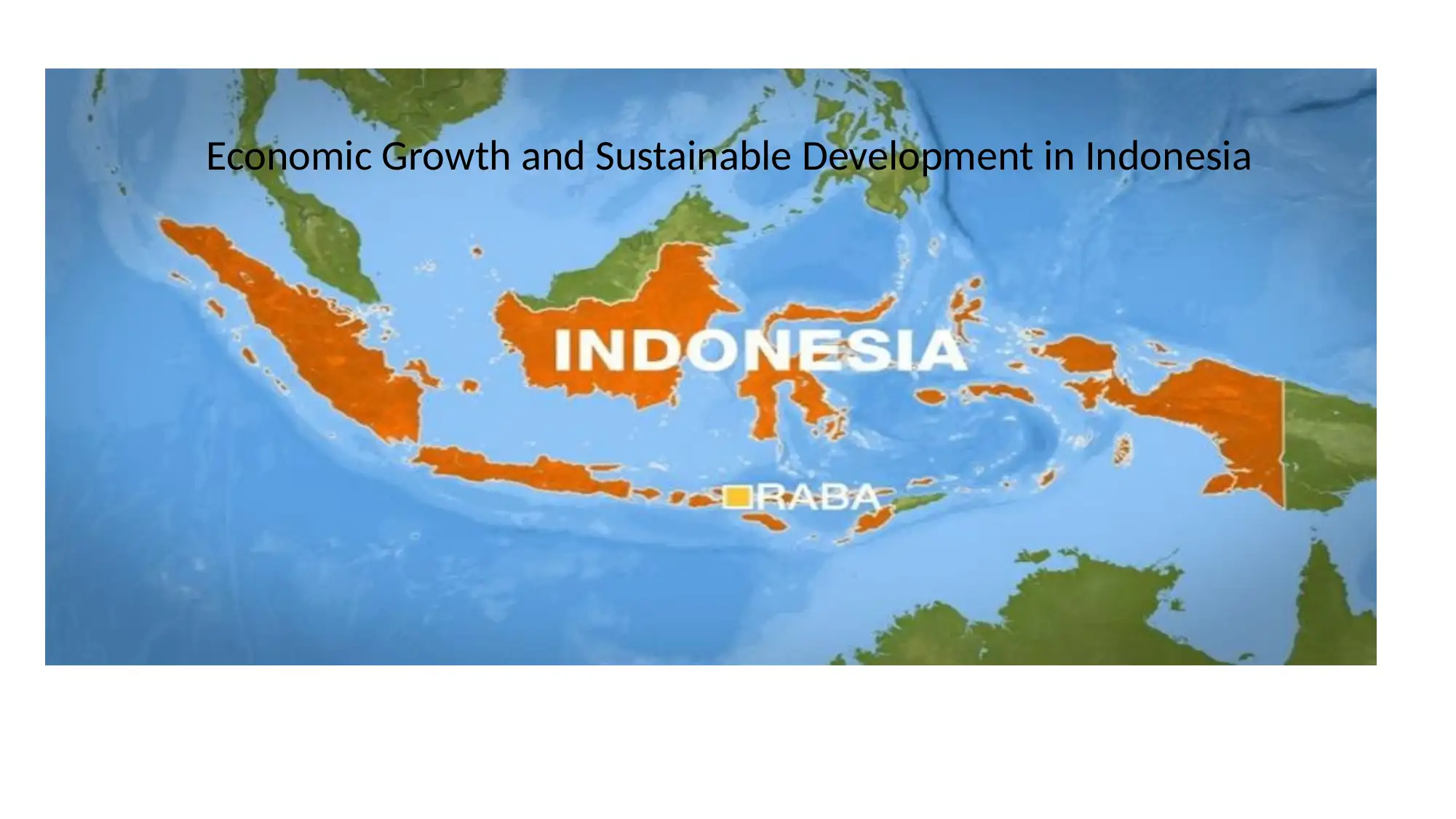
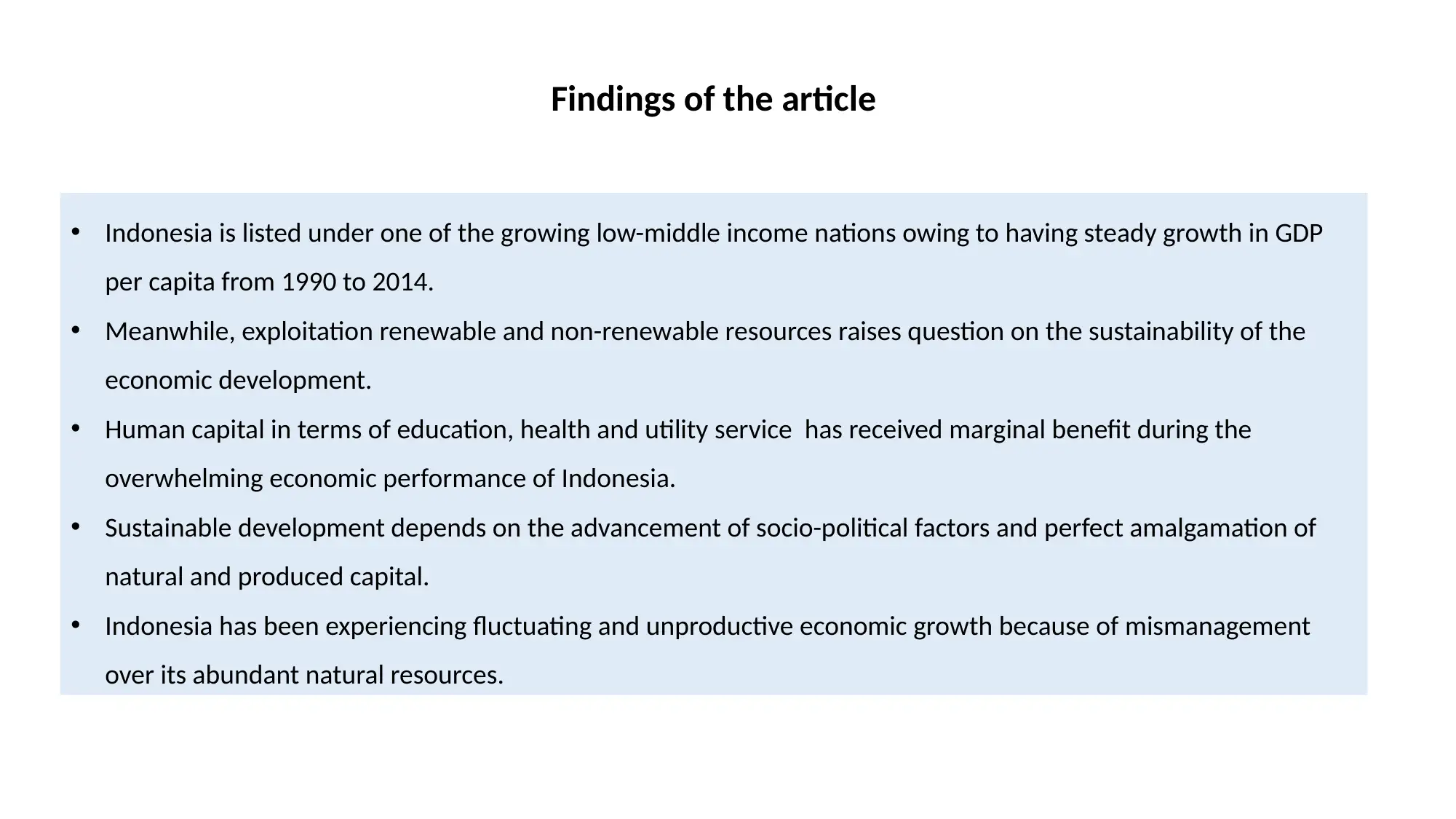
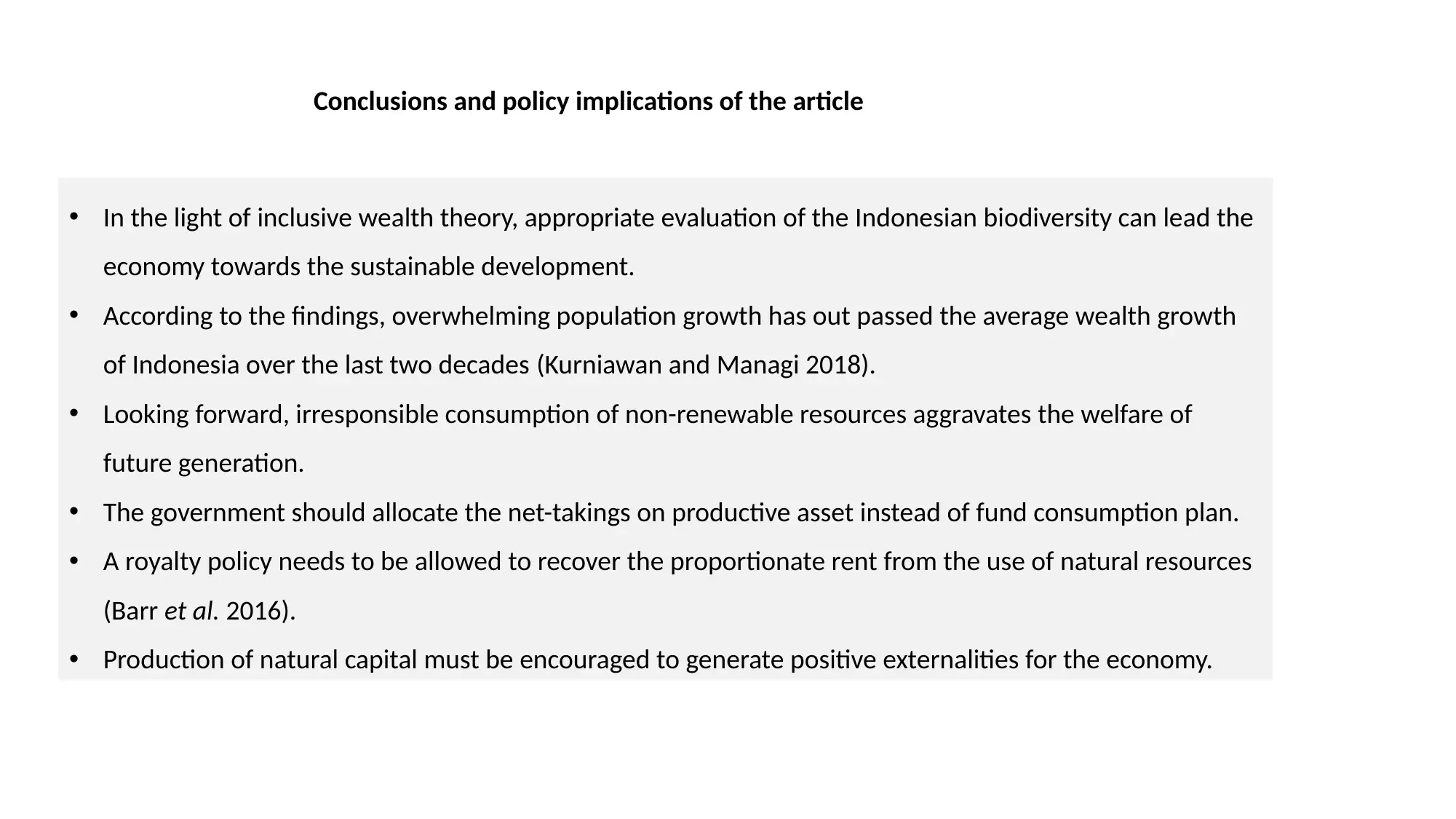

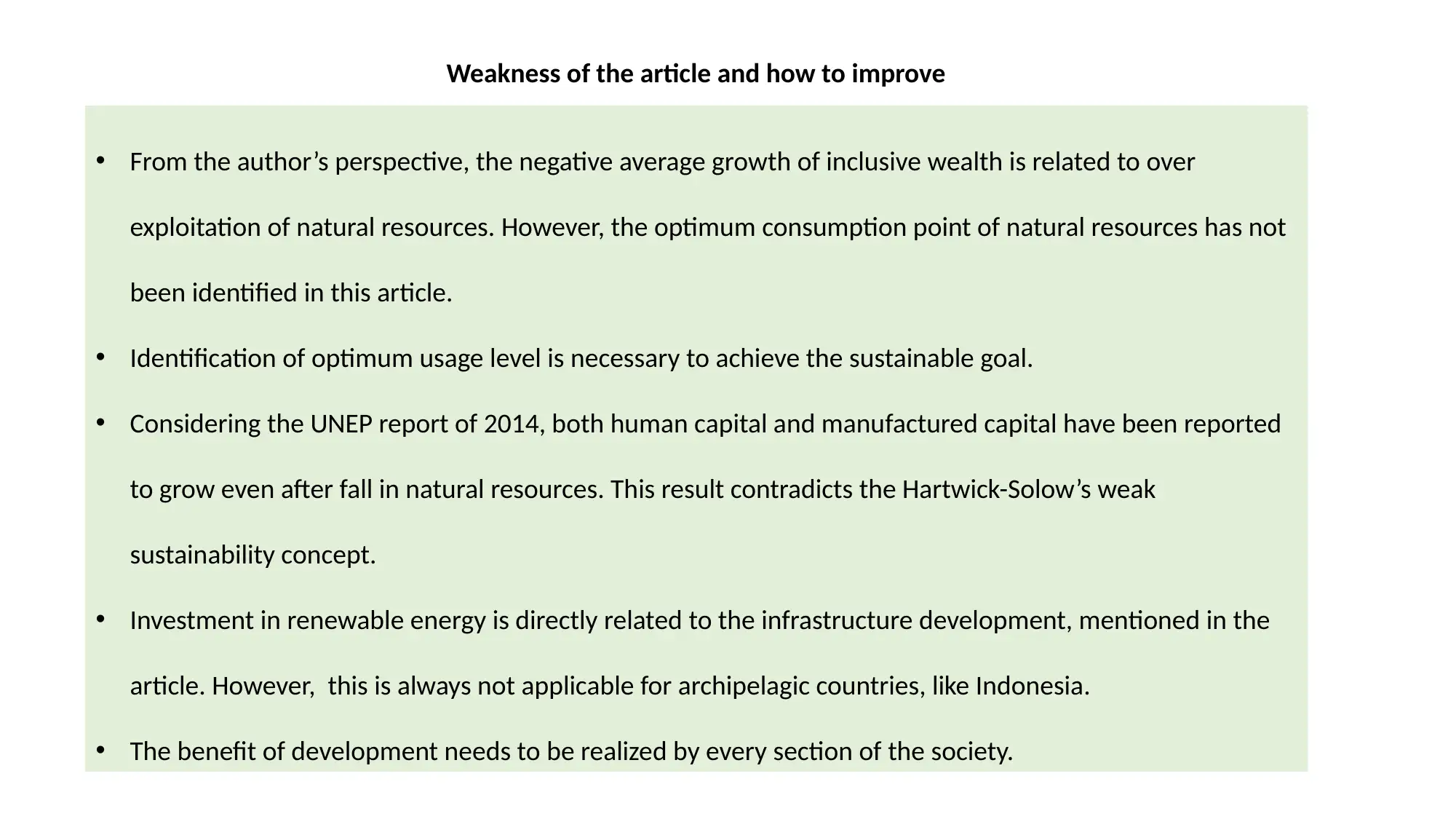
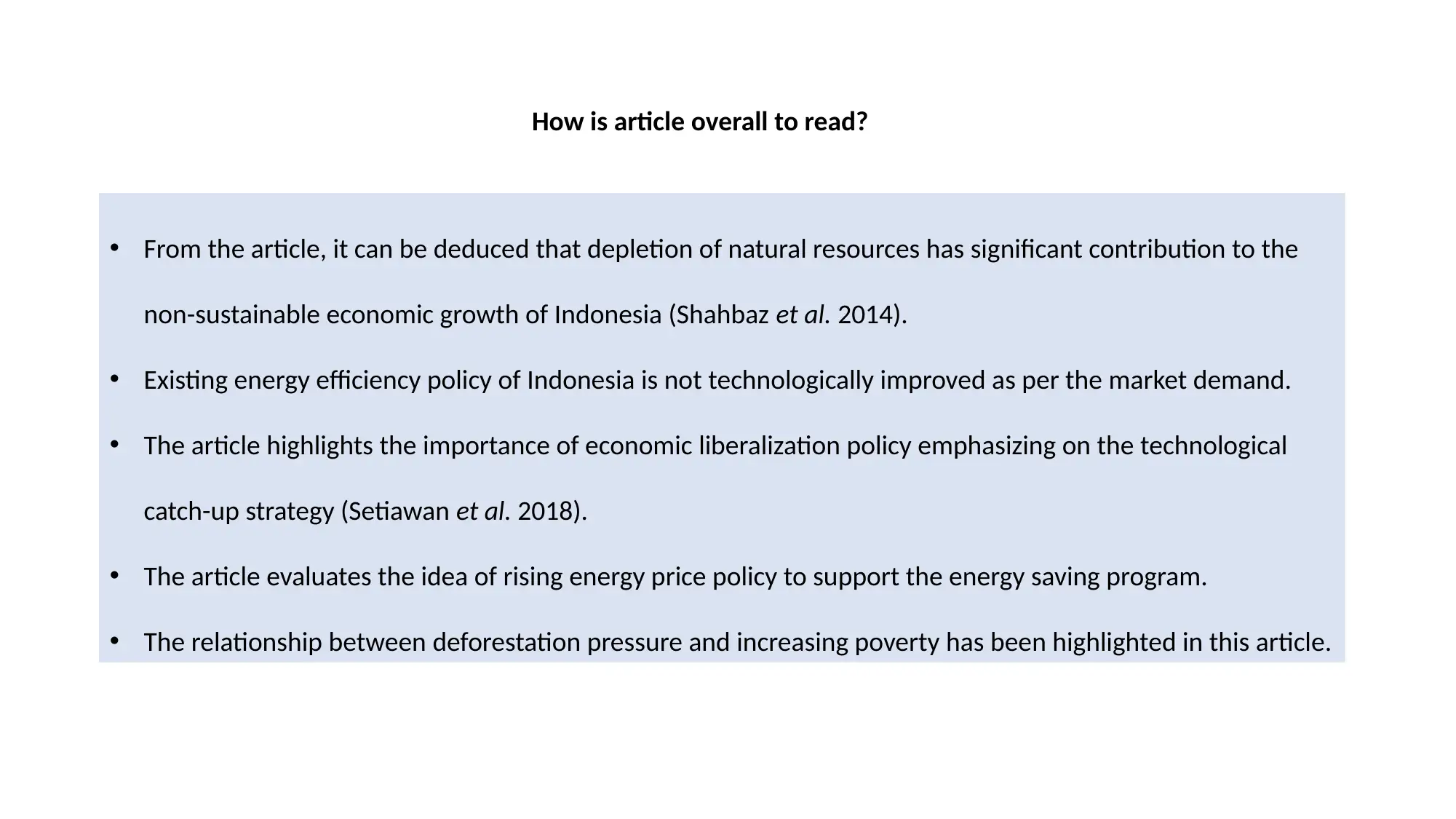
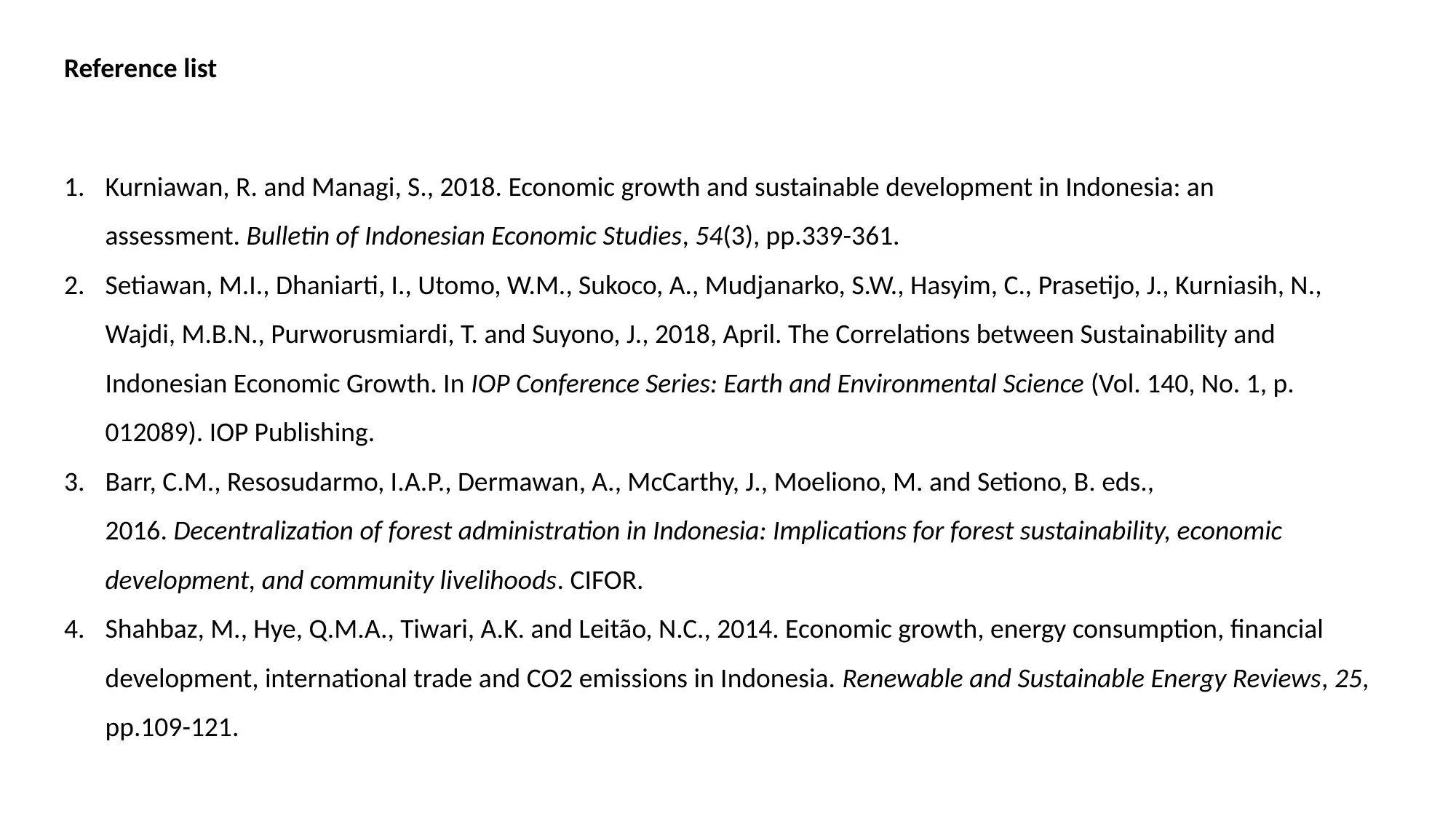







![[object Object]](/_next/static/media/star-bottom.7253800d.svg)